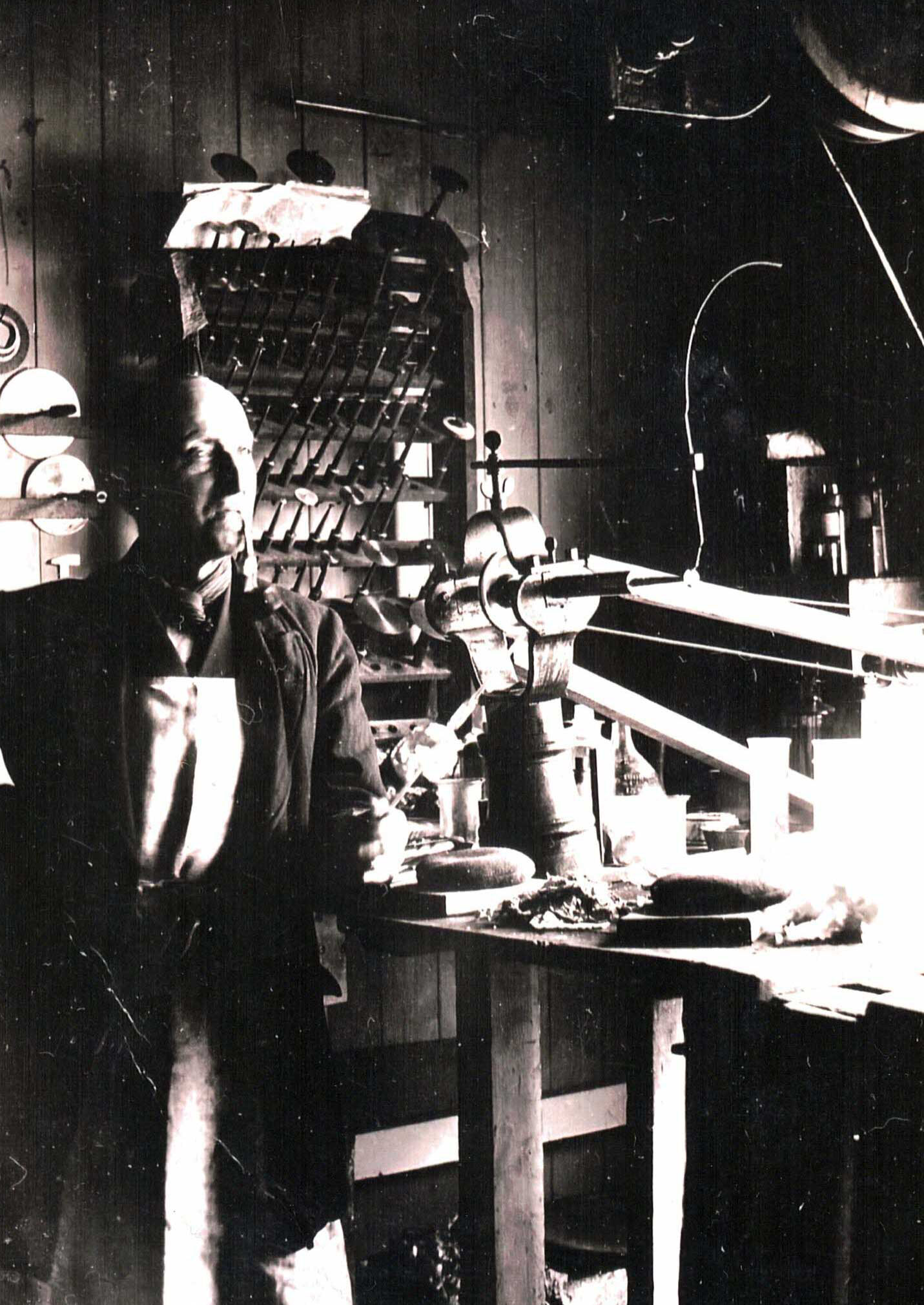PEOPLE
エマニュエル・ホープトマン
Emanuel Hauptmann
「江戸切子」と言えば日本の伝統工芸ですが、意外なことにルーツのひとつは英国とされています。そのきっかけとなったのは、明治の維新政府から技術指導の要請を受けて1874年から1881年にかけて来日したガラス製造分野の専門技師である4人の英国人たち。彼らによってカットグラスの技術が日本に伝えられ、江戸切子は大きく発展しました。メンバーの1人が加工のプロフェッショナルであり、のちに“江戸切子の父”と呼ばれるようになったエマニュエル・ホープトマンです。
1848年に、ボヘミアガラスで知られるボヘミア地方(現チェコ共和国西部)の小さな村に生まれたホープトマン。1860年代になると、スコットランドのエディンバラでガラス職人として働いていた叔父たちの元に向かい、カッティングやグラヴィール※といった技術を習得します。その後、異国を巡歴中に日本へ渡り、ガラス加工の指導を行いました。
江戸切子は、1834年にビードロ屋の加賀屋久兵衛が江戸で始めたのが起源とされているため、ホープトマンらが来日したときにはすでに存在していました。しかし、当時は海外のガラス食器を見様見真似で作っていたと言われています。そこで、ホープトマンが日本の職人たちに教えたのは、西欧式の回転工具を使ってガラスを削ったり磨いたりする英国の技術。それによって、江戸切子はさらなる進化を遂げることとなりました。ホープトマンの直系にあたる堀口切子では、技術と精神を継承しながら今ある価値観を再定義することをつねに心がけています。
※グラスの表面に回転工具をあてて模様などの彫刻を施すこと
Edo-kiriko is widely known as a Japanese traditional craft, but suprisingly it has also some roots in the United Kingdom. It started when four British men, who were technicians specialized in the area of glass manufacturing, each stayed for a period in Japan between 1874 and 1881 under request for technical guidance from the Meiji government. They passed on their glass cutting technology to Japan, contributing significantly to the development of Edo-kiriko. One of the members was a specialist in glass processing, who later became known as the “Father of Edo-kiriko”. His name was Emanuel Hauptmann.
Hauptmann was born in 1848, in a small village in Bohemia, famous for its glass (in the western part of the current Czech Republic). In the 1860s, he moves to where his uncle was working as a glass craftsman, in Edinburgh, Scotland. There he masters glass cutting and wheel-engraving(*) techniques. Later, he would visit Japan during an itinerary through various countries, and teach glass processing methods.
Supposedly, Edo-kiriko was originated by glassmaker Kyubei Kagaya in 1834, in the city of Edo, therefore it already existed when Hauptmann arrived in Japan. However, it is said that at the time they were merely imitations of foreign glass tableware. Hauptmann introduced British techniques of cutting and polishing glass using western rotary tools to the Japanese craftsmen. This contributed to further evolution of Edo-kiriko. As direct successors to Hauptmann, Horiguchi Kiriko is constantly striving to redefine current values while preserving its technique and spirit.
*The engraving of patterns and such by applying a rotary tool to the surface of the glass.

